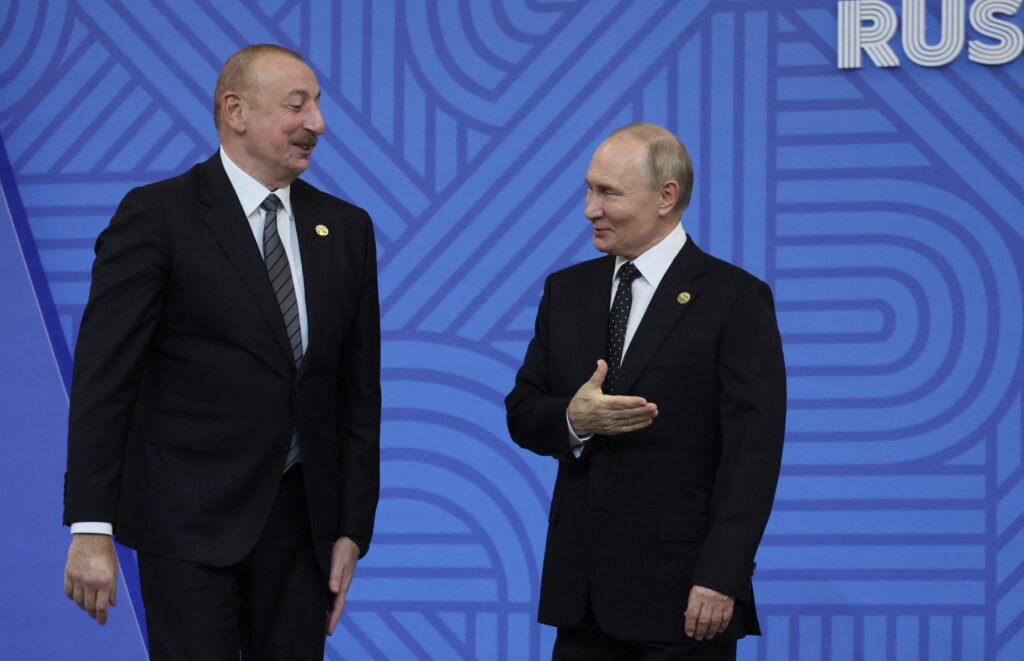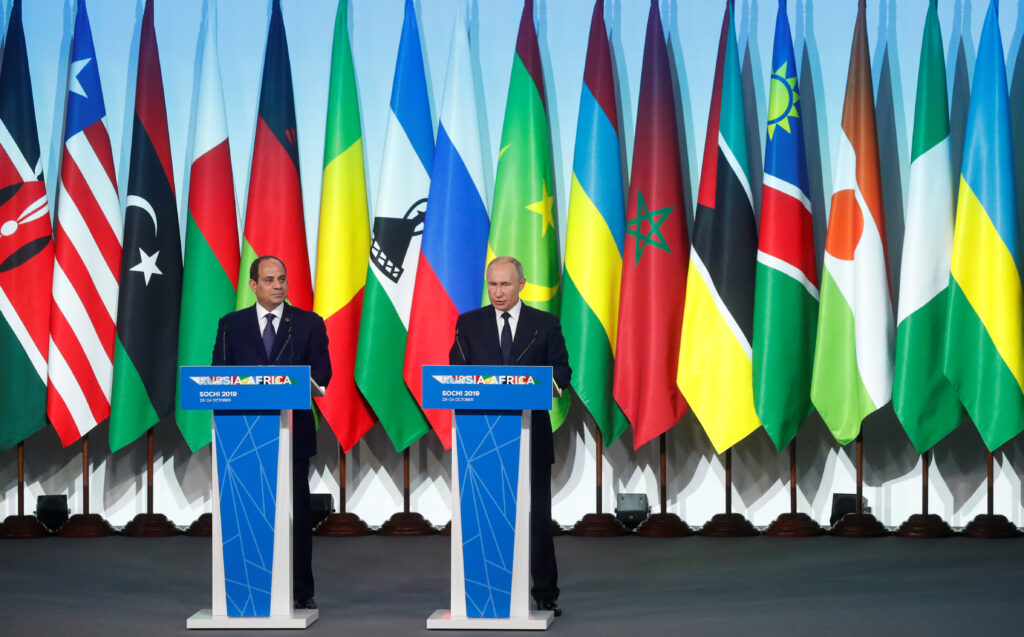Kazakh President Nursultan Nazarbayev recently celebrated his 78th birthday. He has spent 29 years of his life as head of state. During the 2015 presidential elections, he was re-elected for another five-year term with 97.7% of votes. In this sense, the 65-year-old Vladimir Putin, who many accuse of being far from young and holding a monopoly in power, still has some targets to achieve. The presidents of Kazakhstan and Russia, much like the two political regimes in general, are often compared: two similar minded presidential systems with almost identical political institutions and regime characteristics.
Scholars who study authoritarian regimes sometimes argue about the learning pathways when it comes to applying various autocratic methods. Indeed, many mechanisms are taken up and honed by authoritarian regimes from one case to another, from country to country, leading to different consequences and new intricacies of authoritarian practices. Many such borrowings have geographic and regional roots: neighbouring states can share not only resources, but also practical political tips on how best to centralise their regimes. The exact cause-and-effect relationships of certain authoritarian decisions are often difficult to track, but one can observe how similar political institutions lead to different consequences.
Carbon copy institutions?
At first glance, it may seem that the political structures of Russia and Kazakhstan are almost identical. Kazakhstan is a unitary state with strong presidential power and a weak bicameral parliament. Russia and Kazakhstan apply an absolutely symmetrical method to appoint the executive branch of power: both have a prime minister appointed by the president with the parliament’s consent, who then forms executive bodies (in agreement with the president). Admittedly, this procedure for appointing the executive power is not common outside the post-Soviet space. However, it is very convenient for building authoritarianism: if such an institutional arrangement is placed in authoritarian conditions, one gets a coherent political system, convenient for an autocrat, where the executive branch becomes completely controlled by the president, is always approved by a weak parliament or a pro-presidential parliamentary majority, and often becomes the real decision-making centre which also initiates legislative processes. Kazakhstan and Russia have symmetrical mechanisms enabling the concentration of power in the president’s hands, but the separation of powers in Kazakhstan was much more blurred until recently, giving the president almost unlimited powers. The parliament was able to transfer all legislative functions to the president for a year, and the number of presidential terms for one person was unlimited, while the head of state had almost unlimited opportunities to dissolve the parliament and appoint senators to the upper house of parliament.
However, in 2017, the Kazakhstan parliament adopted amendments to the Constitution, which unexpectedly reinforced the role of parliament and re-established the boundaries between the three branches of power. For example, the president no longer has the right to veto decisions of the constitutional court, and some of his powers to consult draft bills has moved to the prime minister and the government. In addition, the new Constitution significantly strengthens the powers of local authorities, removing them from the administrative competence of the central government and giving them autonomy. All these changes indicate that Nursultan Nazarbayev may be planning not to run in the next presidential elections and, therefore, is weakening the powers of the future successor, thereby ensuring his own safety after departure. In Russia, no similar decisions have been taken yet. The recently re-elected president Putin would still need to change the Constitution, either by adding an indefinite number of terms in power, or by borrowing some techniques from his older counterpart from Kazakhstan.
One other distinctive feature of Russia also lies in its federal structure. However, since the regions are not suitably decentralised, this distinctive feature does not make the political institutions of the two countries fundamentally different. Nevertheless, social heterogeneity is reflected in the institutional structure of these countries. Kazakhstan is ethnically homogenous, and although it still has a relatively large percentage of Russians on its territory, Russians are not locked within the territorial boundaries of any particular regions. This is why the regions of Kazakhstan are heterogeneous, primarily in terms of their level of economic development and population density, whereas Russia still has some ethnic regions with their specific languages or religions. This fact has direct consequences for central government policies: many of Russia’s political decisions are aimed at easing potential conflicts with ethnic regions, be it financial injections or efforts to constrain cultural autonomies. This is exactly why decentralisation of municipalities, similar to Kazakhstan’s constitutional reform, cannot be imagined in modern-day Russia.
Implications for regimes: variability of autocratic practices
Another interesting similarity is connected with the peculiarities of the political regime. Unlike its neighbours in the region, i.e. Uzbekistan, Tajikistan or Turkmenistan, Kazakhstan restricts its practices of violence and mixes them with milder manifestations of the regime and a greater openness to the international community. For instance, by analogy with the Russian law on foreign agents, Kazakhstan introduced some forms of control over non-profit organisations that receive funding from abroad, but limited only to monitoring and information gathering. There are no real sanctions or fines for receiving foreign money in Kazakhstan. The law on extremism is the only mechanism used to suppress movements that may be undesirable. As in Russia, any proposals to change the current government are classified as extremist slogans and statements. On this basis, the Democratic Choice of Kazakhstan, an opposition party, was banned and its leader, Vladimir Kozlov, was sentenced to 7.5 years in prison in 2012. The founder of the party, Mukhtar Ablyazov, is persecuted by Russia, Ukraine and Kazakhstan and is currently being protected by political asylum in France.
The events during the protests in the Mangistau region in 2011 mark another significant difference. The protest movement that began with a mass strike by oil workers evolved into mass riots and clashes with the police. During the several days of the clashes, 15 people were killed (according to the official version) when the police opened fire on the protesters. After the conflict was settled, a total of 37 people received final or probation sentences for participation in the riots, five police officers were convicted of abuse of duties for five to seven years in prison. The conflict was personally regulated by Nazarbayev, who fired the head of the oil company where the strikes took place, and also dismissed the governor of the region. He referred to the actions taken by the police as ‘a case of abuse of duties’. The role of these events and its root causes are still being debated, without a clear outcome. Although open fire on the protesters could have meant a radical tightening of the political regime, subsequent actions and reaction from the authorities show that the shooting was either not authorised by the central authorities, or at least it was not discursively supported and, instead, condemned by federal politicians.
One of the important differences between the political regime of Russia and Kazakhstan is the level of its personification, that is, how much one person, the head of state, becomes the determining political institution in the country. Undoubtedly, the role of Vladimir Putin as a persona is extremely important for understanding the political regime in Russia, but the degree of branching in Russian institutions is still slightly more complex and structurally different from the more personalistic regime prevailing in Kazakhstan. The difference lies in the number of players and their significance. For example, the Russian parliament has the so-called ‘systemic’ opposition, which assumes the role of representing the votes of different social strata. For comparison, the lower chamber of the Kazakhstan parliament has three parties, with 82% of the seats held by Nazarbayev’s ‘Light of the Fatherland’ party. This situation is facilitated by the proportional electoral system with a 7% threshold, as well as the unexpected timing of elections: as a rule, the date is set shortly before the elections, and the existing parliament is dissolved ahead of schedule. The programme of the ruling party makes several mentions of the incumbent president of Kazakhstan as ‘a political ideal’. Similar manifestations of personalism can be found in other political aspects of the country’s political system. For example, Astana, which became the capital city merely 20 years ago, is regularly positioned as the president’s personal project, and the ‘day of the city’ holiday coincides with Nazarbayev’s birthday. In the Russian case, such analogies can be found (e.g. the sports mega-events such as the Sochi Olympics or the Football World Cup, which obviously have references to the presidential will), but this remains at the level of symbolic, unpronounced ties, not accompanied by the idea to rename the president into ‘the leader of the nation’.
Following different roads
For a long time, Russia and Kazakhstan really walked hand in hand in everything that concerned the construction of political institutions and the strengthening of authoritarianism. For a number of former soviet republics, the collapse of the USSR meant that they had to define the Rules of the game practically from scratch. The same laws and constitutions flowed from one post-Soviet country to another, while reinforcing authoritarian tendencies. Moreover, the stronger the economic and political ties between countries, the more likely they are to develop political institutions alongside the same path. Nevertheless, the slight differences at the start, be they the age of the ‘leader of the nation’ or the presence of ethnically separate regions, have led to a gradual divergence in trajectories over time. While one regime is trying to destroy the system of power that persisted for many years, the other one still needs to figure out how to strengthen power for yet another term of office.










